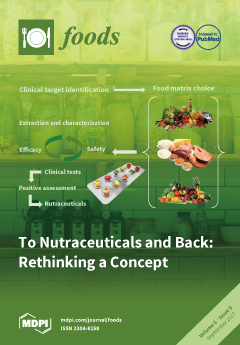Modeling of microbial inactivation by high hydrostatic pressure (HHP) requires a plot of the log microbial count or survival ratio versus time data under a constant pressure and temperature. However, at low pressure and temperature values, very long holding times are needed to
[...] Read more.
Modeling of microbial inactivation by high hydrostatic pressure (HHP) requires a plot of the log microbial count or survival ratio versus time data under a constant pressure and temperature. However, at low pressure and temperature values, very long holding times are needed to obtain measurable inactivation. Since the time has a significant effect on the cost of HHP processing it may be reasonable to fix the time at an appropriate value and quantify the inactivation with respect to pressure. Such a plot is called dose-response curve and it may be more beneficial than the traditional inactivation modeling since short holding times with different pressure values can be selected and used for the modeling of HHP inactivation. For this purpose, 49 dose-response curves (with at least 4 log
10 reduction and ≥5 data points including the atmospheric pressure value (
P = 0.1 MPa), and with holding time ≤10 min) for HHP inactivation of microorganisms obtained from published studies were fitted with four different models, namely the Discrete model, Shoulder model, Fermi equation, and Weibull model, and the pressure value needed for 5 log
10 (
P5) inactivation was calculated for all the models above. The Shoulder model and Fermi equation produced exactly the same parameter and
P5 values, while the Discrete model produced similar or sometimes the exact same parameter values as the Fermi equation. The Weibull model produced the worst fit (had the lowest adjusted determination coefficient (R
2adj) and highest mean square error (MSE) values), while the Fermi equation had the best fit (the highest R
2adj and lowest MSE values). Parameters of the models and also
P5 values of each model can be useful for the further experimental design of HHP processing and also for the comparison of the pressure resistance of different microorganisms. Further experiments can be done to verify the
P5 values at given conditions. The procedure given in this study can also be extended for enzyme inactivation by HHP.
Full article






